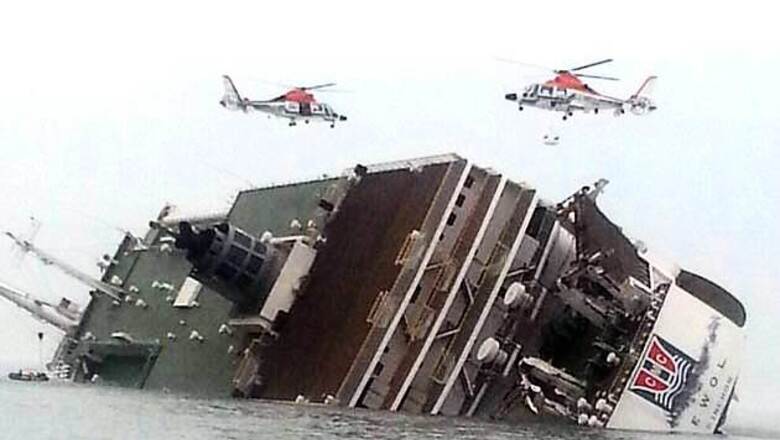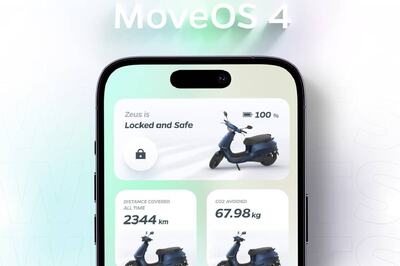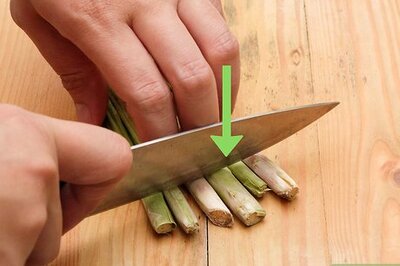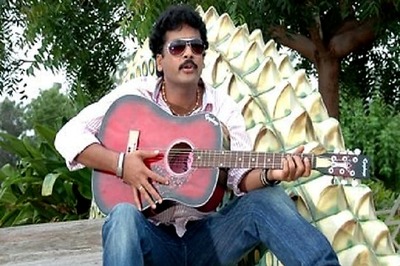
views
Seoul: The company that owned the South Korean ferry which sank last week, killing possibly hundreds of people, sprang out of a shipping to cosmetics empire founded by a businessman who was jailed for fraud and then went bankrupt.
The founder of the predecessor company, Yoo Byung-un, once likened his 1997 bankruptcy proceedings to a captain going down with his ship. An investment vehicle run by his two sons and its shipbuilding affiliate are now the majority owners of Chonghaejin Marine Co. Ltd, the operator of the ferry that capsized.
There is no suggestion that last Wednesday's accident was in any way linked to the company's chequered history. But Yoo and his two sons have been barred from leaving South Korea as investigators seek to establish what led to the fatal sinking of the Sewol ferry.
Of the 476 passengers and crew on board, 339 were children and teachers on a high school outing. Only 174 people have been rescued and the remainder are all presumed to have drowned, a disaster that has shocked South Korea.
Officials said on Tuesday they had launched investigations this week into tax issues and possible illegal foreign currency transactions by the company and by the Yoo family.
An official at the Financial Supervisory Service told Reuters that the financial regulator is investigating whether Chonghaejin Marine or the Yoo family engaged in any illegal foreign exchange transactions without elaborating further.
Another person familiar with the matter told Reuters that the prosecutors are looking into potential tax evasion by the unlisted firm, its affiliates or the Yoo family. A spokesman at the tax agency declined to comment on the matter.
No one was available for comment at either the company or the family. Neither of the regulatory officials were willing to be named, citing the confidential nature of the investigation.
Yoo was jailed for four years in the early 1990s, according to court proceedings at the time, for his role in colluding with one of his employees to defraud a group of people of 1.2 billion won ($1.15 million).
The 73-year-old is typical of the entrepreneurs who helped transform South Korea from one of the poorest countries in the world to one of the richest in a generation, a process dubbed "The Miracle on the Han River" after the river that runs through the capital Seoul.
"Yoo had business skills. Once he took over a bankrupt textile company and then expanded it into toy exports. Later he even got a state award for strong export performance and further expanded into shipbuilding and ferry operation," said a source who had worked for Yoo for nearly a decade.
Yoo and his sons did not respond to requests for comment on the company's history. No one would go on the record to discuss the family or their business interests.
STARTED FROM SOAP
Yoo started off making soap and ended up with a business empire that spanned shipping, building and cosmetics before the company he ran, Semo Co. Ltd, went bankrupt in 1997.
Its bankruptcy protection petition cited business diversification as the cause of a cash shortage that had fuelled a rise in debts.
According to company filings, Chonghaejin Marine Co. Ltd was set up on February 24, 1999, a day before a court approved the restructuring of the bankrupt Semo, and became a key entity to consolidate Semo's shipping business.
Yoo's sons, Yoo Dae-kyun and Yoo Hyuck-ki, were its majority owners through an investment vehicle and an affiliate. They later became the majority owners of a holding company called I-One-I Holdings that ended up controlling Chonghaejin and other business affiliates, according to the documents.
Subsidiaries of I-One-I Holdings invested 33.7 billion won ($32.4 million) in Semo in 2007 to write off debt and end the court-led restructuring.
It is not clear if Yoo's two sons are involved in the day-to-day management of the company.
According to Chonghaejin's 2010 financial reports filed in 2011, a man called Kim Han-sik is the company's chief executive and owns an 11.6 percent stake in the company. He is one of the top three shareholders along with the two sons and their companies.
Kim was not available for comment because he is hospitalised due to illness, according to a company official.
A media report said Kim used to work for Lloyds and has a close personal relationship with Yoo. He appeared in public last week when Chonghaejin apologised for the disaster.
Chonghaejin itself won an award for excellence in customer satisfaction in Ministry of Land, Infrastructure and Transport in 2011.
Reuters made several attempts to contact the ferry operator at its offices on the second floor of Incheon Port International Passenger Terminal, but no one answered repeated telephone calls.
Yoo's company Semo started operating ferries on Seoul's Han River in 1986, just two years before the city held the Summer Olympics. The number of daily ferry passengers in the river jumped to around 4,000 in 1988, the Olympics year, from just 46 in 1986, according to media reports at the time.
Detailed financial information on its ferry business at the time is not available, as South Korean regulators introduced filing requirements only in 2000.
Semo itself was subject to an investigation when a ship in the Han river drifted and collided with three of Yoo's moored ferries, killing 13 people with one missing.
The company was cleared of any liability for the incident which occurred in 1990.
CAPTAIN OF A SHIP
Yoo described his feelings about the bankruptcy in a magazine interview.
"I had thought if you are CEO, it's like you're the captain of a ship. You are bound together and share your fate with the ship until she goes down," Yoo said in an 1999 interview with a monthly magazine Chosun after filing for bankruptcy of Semo.
"But I realised, as the ship sank, there are people who can swim it through so well ahead of others and be saved," he said.
When the Sewol went down last week, its captain and many of the crew were among the first to leave the vessel, witnesses have said.
Through I-One-I, Yoo's two sons have direct or indirect stakes in nine business affiliates that include the Sewol operator Chonghaejin, shipbuilder Chonhaiji and cosmetics firm Dapanda Co, according to data from South Korea's Financial Supervisory Service.
Yoo himself doesn't own any major stake in these companies, according to the filings.
I-One-I reported 4 billion won net loss in 2013 after posting 2.1 billion won of profit in the prior year, partly because of increased interest payments and valuation loss from its investment in affiliates, including shipbuilder Chonhaiji and paint manufacturer Ahae.
In 2012, I-One-I reported a profit and returned 175 million won to shareholders in dividends, or 8.12 percent of its profit.



















Comments
0 comment